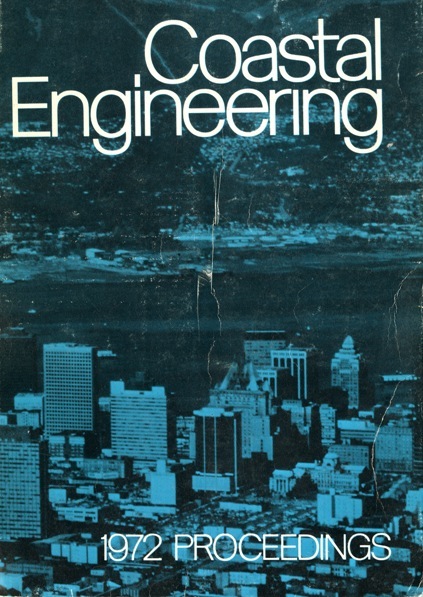Abstract
This paper summarizes the results of a continuing study at the hydraulic laboratory at the University of California at Berkeley on this subject, which is supported by the Coastal Engineering Research Center (CERC) and which has resulted over the years in the Theses of Huon ti (1954), M. Manohar (1955), G. Kalkanis (1957, 1963), M. M. Abou-Seida (1965), M. M. Das (1968) and is at this time being continued by T. C. Mac Donald. All these researchers have greatly contributed to the success of this work while the author was mostly responsible for the continuity of the study. The aim of the study was to see if it is possible to establish for the description and prediction of sediment transport by waves a general system of approach similar to that which the author published in 1950 under the title '.'The Bed-Load Function for Sediment Transport in Open Channel Flows". ( It was hoped at the time that many of the basic steps of such a description may at least be similar to those used for uni-directional flow. It became apparent that such similarities of approach were quite feasible; but another difficulty became apparent from the beginning. While in the uni-directional flow many details of the flow, such as velocity distributions, boundary layers and turbulence had been, studied and described previously, such knowledge was almost entirely lacking for wave motion. The first part of the study consisted entirely of hydraulic measurements and of their analysis. In order to determine the necessary scope of such hydraulic studies, the analogy with sediment transport in uni-directional flow was used. Some of the principles governing uni-directional flow transport are: 1. Sediment motion can be divided into bed-load motion or surface creep and suspension. 2. While moving as bed load, the particle weight is to a large part transmitted directly to the nonmoving bed, not to the flow. 3. The rate of bed-load motion is defined by the equilibrium exchange of sediment between the bed-load and the nonmoving bed. 4. This equilibrium gives a direct relationship between the sediment rate and the flow conditions near the bed, including the turbulence. 5. The flow condition near the bed can be predicted for a uni-directional boundary layer as a function of the bed shear and the bed roughness, only.
Authors retain copyright and grant the Proceedings right of first publication with the work simultaneously licensed under a Creative Commons Attribution License that allows others to share the work with an acknowledgement of the work's authorship and initial publication in this Proceedings.

